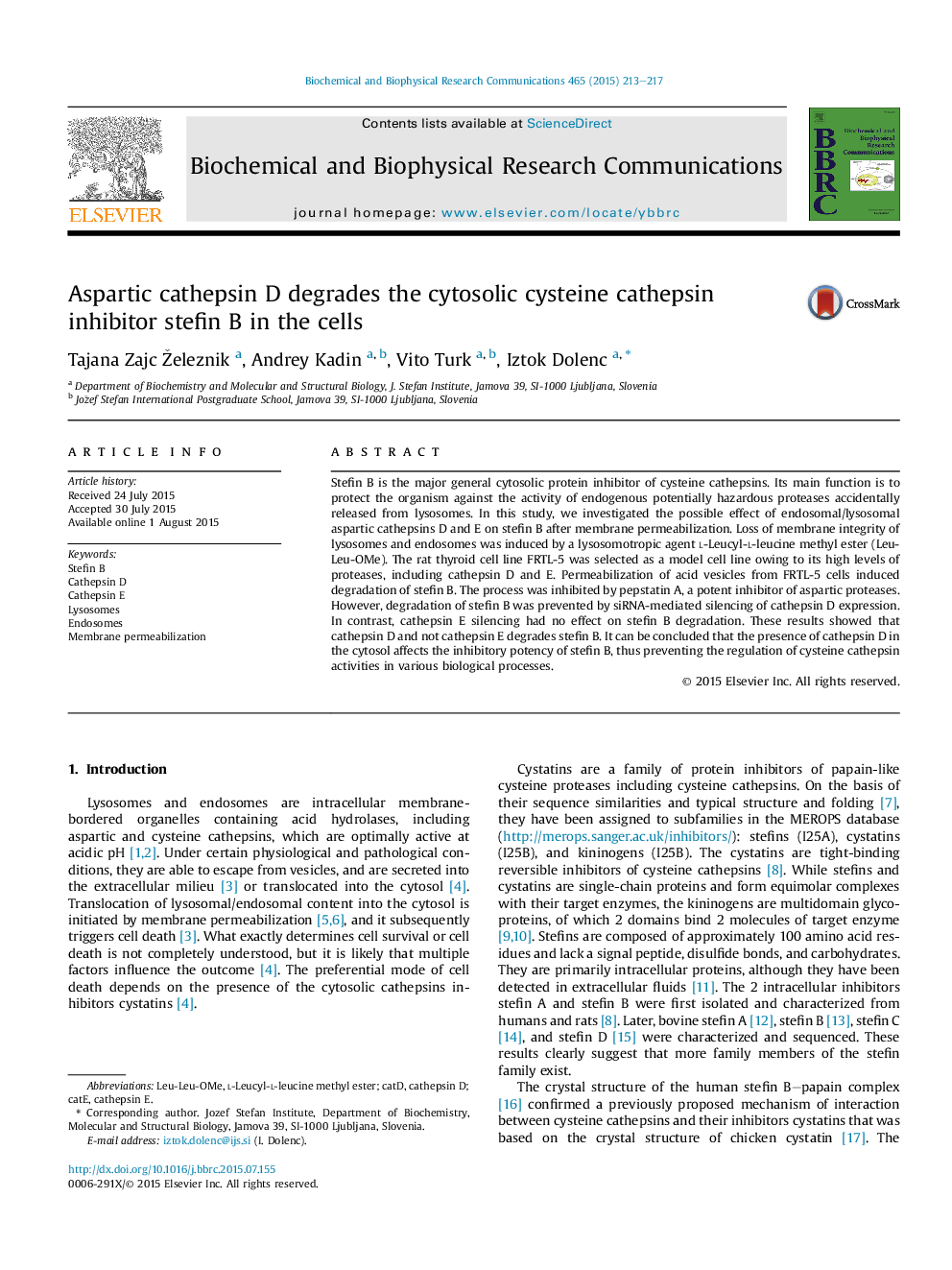| کد مقاله | کد نشریه | سال انتشار | مقاله انگلیسی | نسخه تمام متن |
|---|---|---|---|---|
| 1928010 | 1050303 | 2015 | 5 صفحه PDF | دانلود رایگان |

• Translocation of lysosomal enzymes into cytosol induces inactivation of stefin B.
• Degradation of stefin B is blocked by silencing cathepsin D expression.
• Silencing cathepsin E expression has no effect on stefin B.
Stefin B is the major general cytosolic protein inhibitor of cysteine cathepsins. Its main function is to protect the organism against the activity of endogenous potentially hazardous proteases accidentally released from lysosomes. In this study, we investigated the possible effect of endosomal/lysosomal aspartic cathepsins D and E on stefin B after membrane permeabilization. Loss of membrane integrity of lysosomes and endosomes was induced by a lysosomotropic agent l-Leucyl-l-leucine methyl ester (Leu-Leu-OMe). The rat thyroid cell line FRTL-5 was selected as a model cell line owing to its high levels of proteases, including cathepsin D and E. Permeabilization of acid vesicles from FRTL-5 cells induced degradation of stefin B. The process was inhibited by pepstatin A, a potent inhibitor of aspartic proteases. However, degradation of stefin B was prevented by siRNA-mediated silencing of cathepsin D expression. In contrast, cathepsin E silencing had no effect on stefin B degradation. These results showed that cathepsin D and not cathepsin E degrades stefin B. It can be concluded that the presence of cathepsin D in the cytosol affects the inhibitory potency of stefin B, thus preventing the regulation of cysteine cathepsin activities in various biological processes.
Figure optionsDownload as PowerPoint slide
Journal: Biochemical and Biophysical Research Communications - Volume 465, Issue 2, 18 September 2015, Pages 213–217